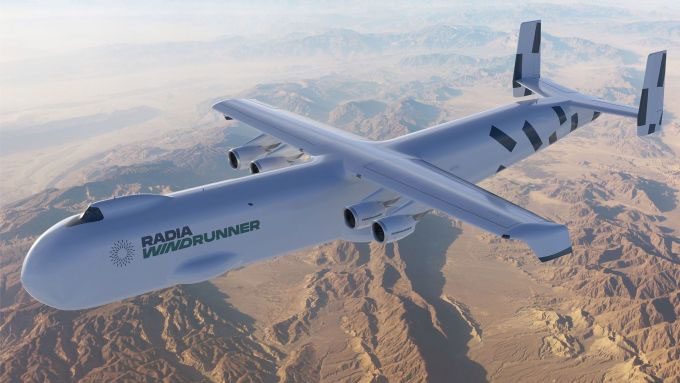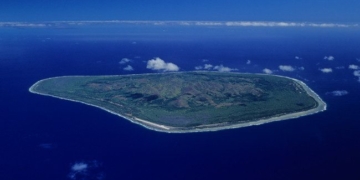WindRunner Aircraft will stretch to 108 meters, surpassing the world’s longest commercial airplane, the Boeing 747-8, making the transport of wind turbine blades on land significantly easier.
The massive blades required for the most powerful offshore wind turbines today are not easy to transport on land, limiting their use. Radia, a Colorado-based energy startup, has proposed a solution: the construction of a giant aircraft to transport wind turbine blades, as reported by Interesting Engineering on March 15. Named WindRunner, this aircraft promises to revolutionize the renewable energy sector by simplifying the transportation of turbine blades.

Design of WindRunner, the giant aircraft specialized in transporting wind turbine blades. (Photo: Radia).
WindRunner can reach a maximum altitude of 12,500 meters and fly from the center to a location up to 2,000 kilometers away. The size of WindRunner makes even the most prominent commercial aircraft seem small.
This aircraft stands 24 meters tall and has a wingspan of 80 meters. With an astonishing length of 108 meters, it is 32 meters longer than the Boeing 747-8, the longest commercial airplane in the world. To put this into perspective, WindRunner is nearly as long as an NFL football field. This impressive size gives the aircraft a cargo volume of 8,200 cubic meters—approximately 12 times the volume of the Boeing 747-400.
With its massive frame, WindRunner requires specialized infrastructure. For instance, 1,800-meter runways are needed at wind turbine blade manufacturing sites to accommodate the aircraft’s take-offs and landings.
The primary mission of WindRunner is to transport gigantic wind turbine blades on land. These blades can measure between 45 to 90 meters in length and weigh up to 35 tons. Such massive dimensions pose challenges for current transportation methods. For offshore wind farms, specialized ships transport the turbine blades. However, for onshore wind farms, traditional vehicles cannot carry excessively large blades.
Mark Lundstrom, founder of Radia and a rocket scientist trained at MIT, spent seven years collaborating with a team of engineers to improve WindRunner’s design. In addition to addressing transportation limitations, the aircraft’s capacity paves the way for the development of larger onshore wind turbines, maximizing wind energy potential, Lundstrom noted.
Radia has revealed that WindRunner could take flight within the next four years. According to Lundstrom, the main purpose of the aircraft is to accelerate the development of wind energy. However, the aircraft may also be useful for other missions, including the transport of heavy military equipment.


















































